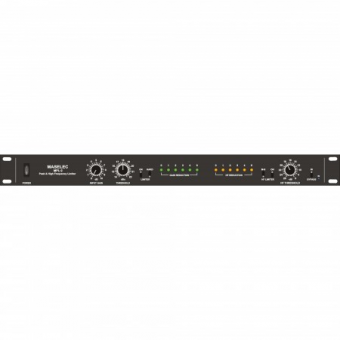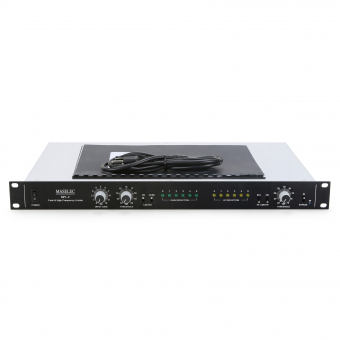Maselec MPL-2 Peak and HF Limiter




 368 900 р. предложить свою цену
26879
368 900 р. предложить свою цену
26879
The MPL-2 is housed in a 1U 19" rack mount alloy case.
A minimum of controls is used due to automatic time constants and optimization techniques for the gain reduction. The advantage is not only simple operation but also increased performance for highly dynamic and inconsistent materials without the need for continuous readjustments.
The input gain does not reduce the wide dynamic range of the limiter. It can be used at its maximum setting with no increased risk of distortion. This eliminates the need for excessive levels, which could cause clipping in equipment feeding the input of the limiter. A further benefit is that the maximum peak output level (set with the threshold) is independent of different gain settings.
High Frequency Limiting is primarily intended for use as a de-esser, reducing unattractive high frequencies. Part of the high frequency limiter circuit is also used to reduce distortion from the wideband limiter.
Users of the MPL-2 will notice the removal of spurious peaks, and an increase of subjective levels, without the coloration and increased distortion so often associated with soft clippers and other ultra fast limiters.
The MASELEC model MPL-2 limiter was designed to:
- Prevent peak levels from exceeding a pre-set limit.
- Increase subjective loudness of programmes.
- Give digitally recorded programmes a more ‘analogue’ character.
- Introduce a soft 'levelling' function for large differences in average programme levels.
- Reduce dynamic range of programmes to maximize the performance of AD converters.
- Add no audible 'pumping' resulting from limiting.
- Have a well-defined threshold, with no need for programme related adjustments.
